Update: Google recently announced that they will be globally restricting ads in the tech support category in the face of widespread fraud. To avoid being targeted in the sweep, make sure that your ads provide legitimate value, are not misleading to consumers, and that your business is included in Google’s planned verification program.
This post, with a spotlight on PPC for tech support, is part of a series focusing on specific PPC strategies per industry. While the basic components of every PPC campaign are the same, no two are identical. Consult your industry’s guide for tailored tips!
You have the hottest technology on the market, and the SLAs for your managed IT services are the best in the business. The question is, how can you get people to discover it?
It’s likely you don’t want to deal with marketing your IT business, but even a small-scale strategy can bring in a flood of new clients. One of the fastest ways to generate awareness and leads with a positive ROI is PPC. In this guide, you’ll learn the best PPC strategies for tech support to supercharge the growth of your IT service business.
After you’re done with this guide, you’ll have a proven roadmap to grow your tech business using the power of AdWords. Let’s get started!
Step 1: Know Your Market
Before you can start generating leads through PPC, you must understand who you’re attracting. Ask yourself, who are my ideal clients? Are there certain industries, geographies, or company sizes you’d prefer to work with? Define this clearly before setting up your AdWords campaign. Once you know who you’re targeting, it’s time to conduct keyword research.
First, it’s important to understand that different keywords have different intent behind them. There are three categories of keyword intent:
- Navigational keywords are entered by searchers who are looking for a specific brand, piece of content, etc.
- Informational keywords are where the searcher is looking for the answer to a question, insight into a challenge, or looking for instructions for achieving their goal.
- Transactional keywords are those that indicate high commercial intent. These are searchers who are usually ready to buy something.
For example, let’s say you offer tech support services to accounting agencies. Your ideal client may be searching for the following keywords:
- “best antivirus software for accounting firms”
- “tech support service for accountants”
The first keyword is informational. People searching for this keyword are researching antivirus software but aren’t ready to buy yet. However, the second keyword is the perfect transactional keyword. It’s likely these searchers are looking for a service just like yours.
To start the keyword research process, brainstorm a list of ideas as a team. You can do this by looking at your website, content, and landing pages. For example, this page on Apex Tech Services IT Support page yields the following ideas:
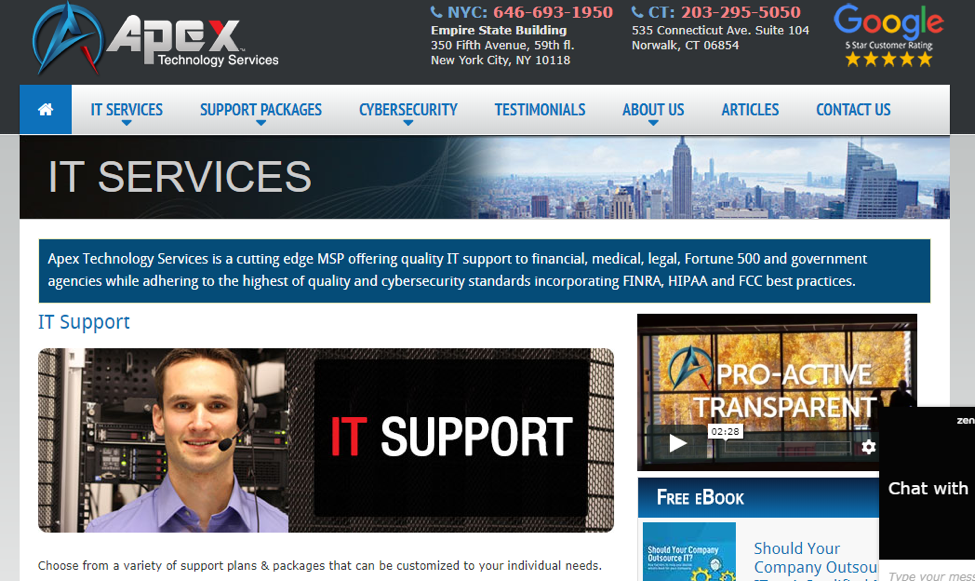
- IT support
- Medical IT support
- IT support for government agencies
- 24-hour IT support
- Computer management service
- IT helpdesk service
- …and so on
We can then quantify the search data behind these keywords plus come up with new keyword ideas using Google’s Keyword Planner (GKP). To access GKP, head to AdWords, click the spanner icon and select “Keyword Planner” under the “Planning” sub-section:
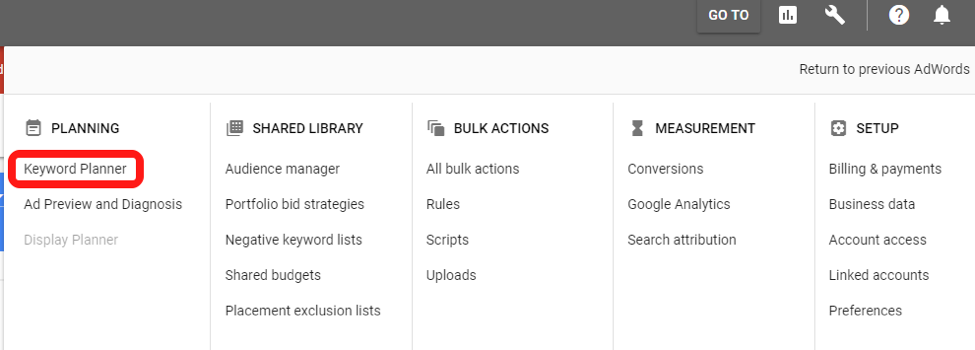
In the next screen, enter a keyword and hit “enter.” You’ll then be given a list of related keywords:
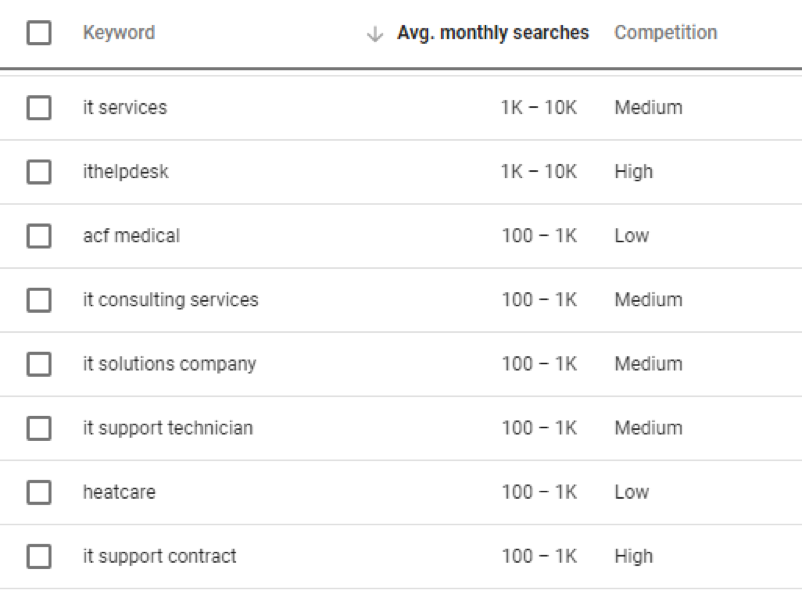
“Avg. monthly searches” shows the number of searches there are for a keyword each month, and “Competition” shows how many other companies are bidding for that keyword. If you’re just getting started, you should aim to find keywords with low competition and a high number of monthly searches.
Another free tool is Ubersuggest. Like GKP, simply enter your keyword, and it will provide a list of keyword suggestions:
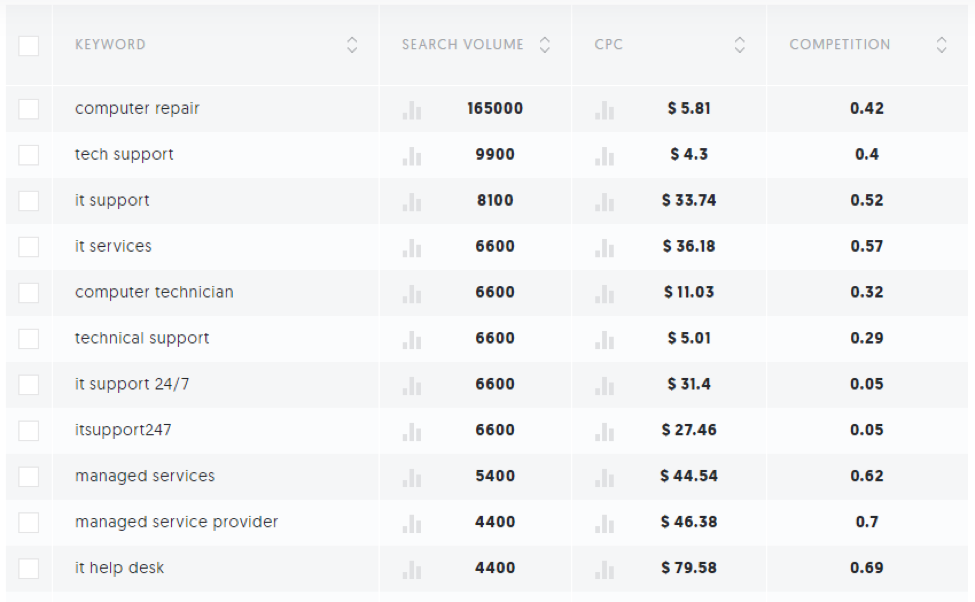
Step 2: Setting Up Campaigns (The Right Way)
Once you have selected your target keywords, it’s time to set up your PPC campaigns. This involves creating a structure that makes it easy to manage and boost effectiveness.
These structures usually fit into one of the following categories:
- The different services you offer. For example, “IT support” and “Managed Cloud Services.”
- Geographical locations you serve. You can do this by city, state, and territories. For example, “New York” or “Austin, Texas.”
- Branded Terms vs. Generic Terms. For example, “Apex Tech Support” vs. “IT support.”
There are several different campaign types you can choose from. For the sake of this guide, we’re going to focus on the search network only. To set up a new campaign, head to the “Campaigns” section in AdWords and click the blue “plus” icon:
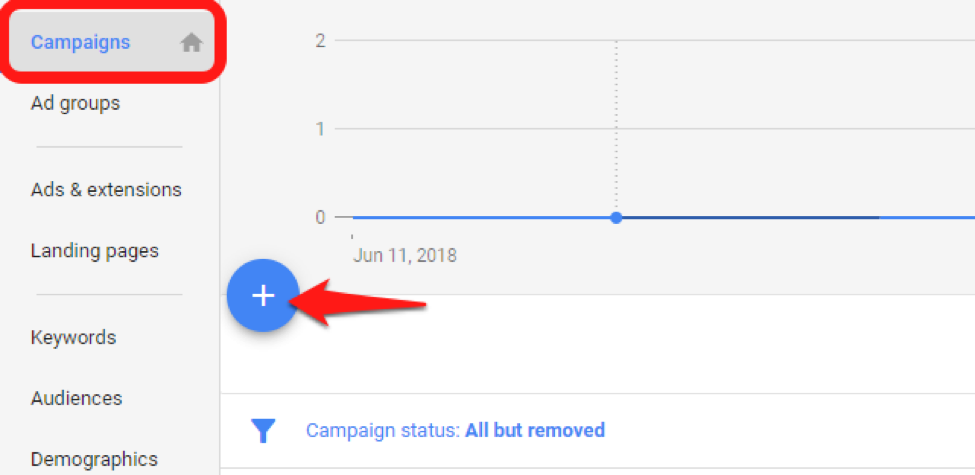
Under “Select a campaign type,” choose “Search.” You’ll then be asked to select a Goal. For the sake of this guide, we’ll select “Leads,” as it’s likely your prospects will require some nurturing before they’re ready to do business with you:
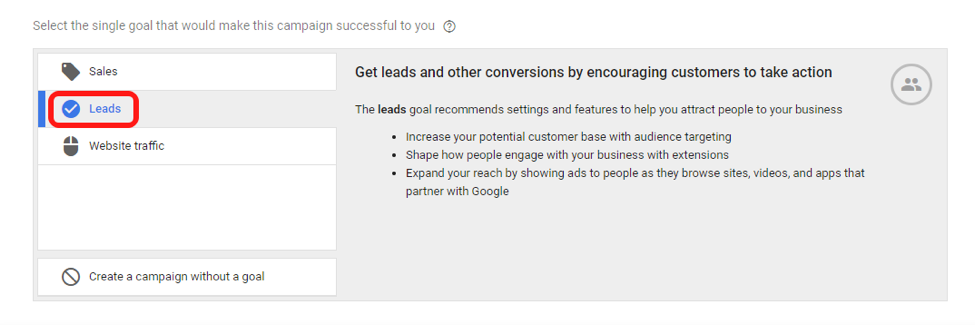
Then, select the “Website visits” checkbox, enter your website URL, and click “Continue.” On the next page, name your campaign based on the category we discussed earlier. For example, “IT Support New York” for targeting specific geographical locations:

Scroll down to the Locations section. Here, select the “Enter another location” radius box and search for your target location, e.g., “New York.” To set the radius, click on “Advanced Search,” select “Radius” and search for your target location. Then select your target radius from the drop-down menu:
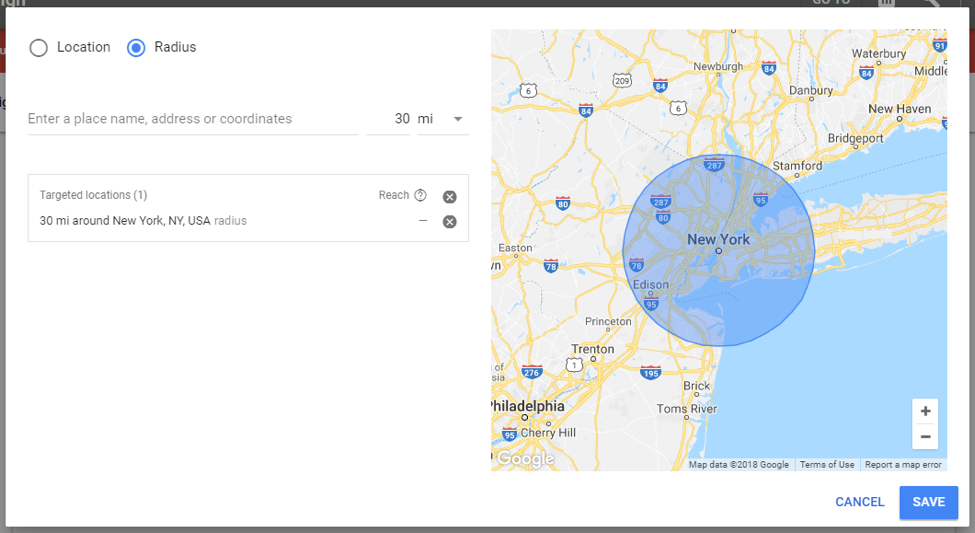
The next step is to decide on budget and bidding. Enter the amount you’re willing to spend each day. Or, divide your monthly PPC budget by 30 to get your daily budget.
Bidding is the amount you’re happy to spend per click or conversion. I highly recommend you bid by click. You can either enter this manually or leave blank and let AdWords decide. When starting out, let AdWords do the bidding for you. You can refine this based on the data you collect once your campaigns have been running for while.
Finally, it’s time to set up Ad Groups. These sit below the campaign hierarchy and makes managing your campaigns easier.
It’s best to create an Ad Group for each of your top performing keywords. This way, your Quality Score (QS) will increase, and you’ll drive more targeted traffic. For now, it’s okay to place all your target keywords in one Ad Group. Once you’ve collected data over time, you can move your top performing keywords into a separate Ad Group. You’ll learn how to do this in step 5.
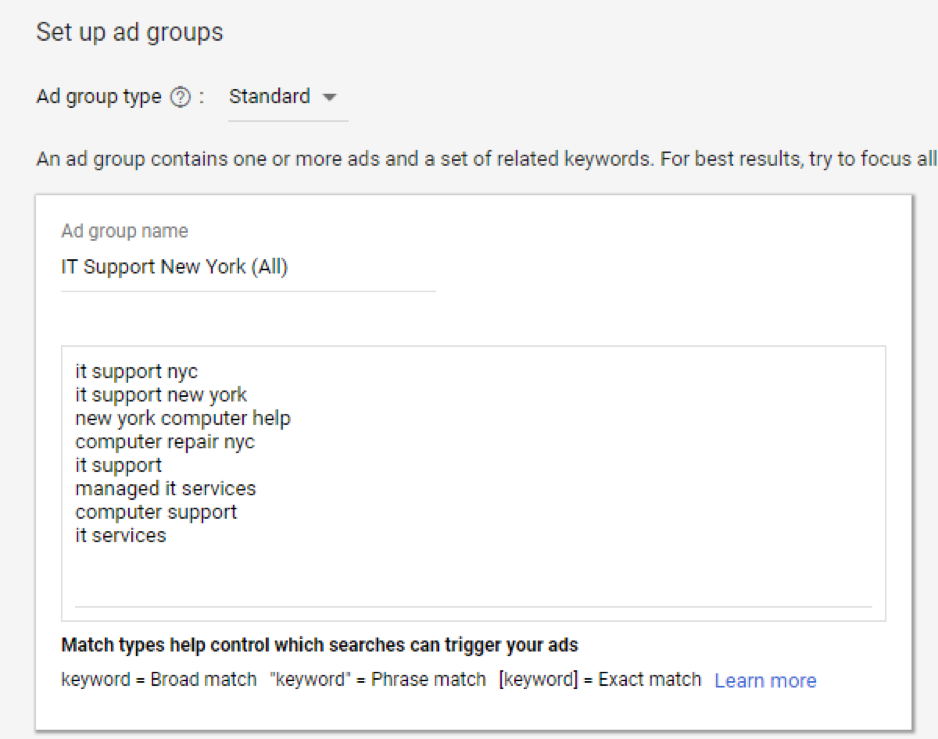
Click “Save and Continue”. Voila! You now have your campaign structure set up and ready to go.
Step 3: Creating Ad Copy That Attracts Clicks
Now that you have your targeting set up, it’s time to get those searchers clicking on your ads. To do this, you need to create compelling ad copy that grabs their attention.
When it comes to PPC ads, you have a limited amount of space to work with. Here’s what the PPC ad structure looks like:

It all starts with the headline. This is what will grab your prospects attention and compel them to click. Here are some headline guidelines to follow:
- Include a number or statistic
- Include the target keyword
- Make it benefit-driven
In the example below, OmniPush have added the target keyword (“IT Support New York”) and include a benefit – “Your very own IT department”:

Next, write a description that sells the “click”. You have a limited amount of space to work with here, so your copy must be as succinct as possible. In this example, Top IT Support uses the description to drive home benefits and share some of their core value propositions:

Finally, it must include a call-to-action. This should tell your prospects exactly what to do next. Miles Technologies does this with the copy “Contact Us Today!”:

Need some inspiration? Check out the top organic listings. Why? Because these are the pages that Google has decided are most relevant to a specific target keyword:
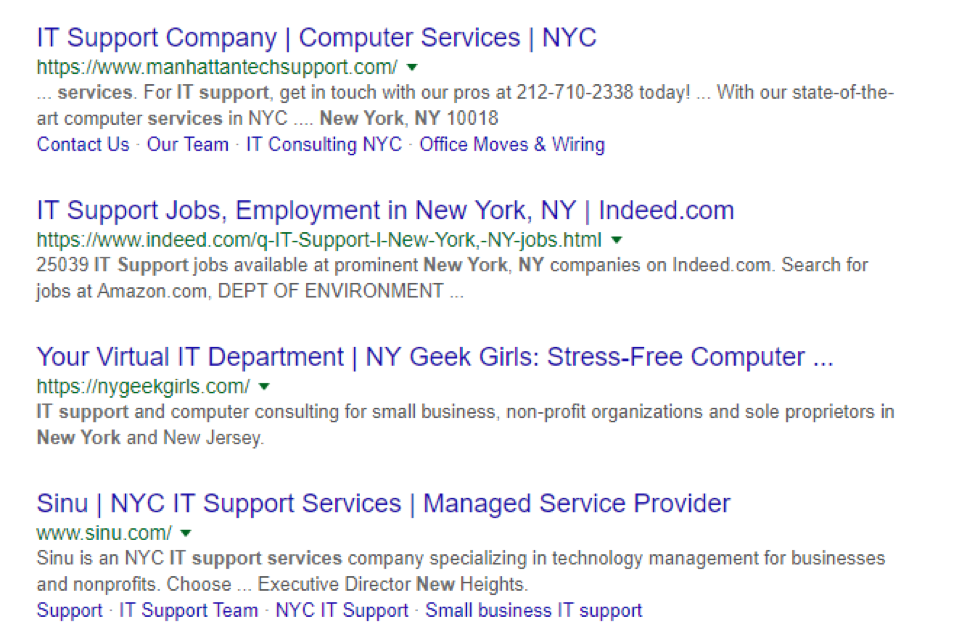
Step 4: Build Landing Pages That Attract Clients
You’ve written attention-grabbing copy for your ad. The question is, where do you send all that traffic you’re driving? This is where landing pages come in.
What are landing pages? They are campaign-specific pages created to drive specific results. They are typically used in PPC campaigns as a place for the searcher to “land” after clicking on the ad.
Landing pages are different from most web pages. They’re designed to get the user to take a specific action and, therefore, must be simple and free from distractions.
Here are some landing page best practices to follow when designing and building your own:
- Remove navigation: Remember, the goal is to get the user to take a specific action. The navigation bar provides too much distraction, allowing users to look around your website. Removing the navigation menu will ensure they don’t wander off.
- A single call-to-action: What is the one specific action you want prospects to take? Is it to pick up the phone and call you, or to fill out a form? Whatever it is, make sure it is the only thing a user can do on your landing page.
- Include a hero shot: The hero shot is an image that illustrates what you’re offering users. For example, if you’re offering a whitepaper, you could include a 3D image of the cover.
- Use video: For something less tangible, such as a consultation, it’s hard to include a traditional hero shot. Instead, create a video to build a personal connection between your brand and the user. This is an opportunity to set the expectations and share the benefits of taking the action you want them to take (e.g., a consultation).
- Add social proof: If people are coming to you for the first time, it’s likely they’ll be skeptical. Remove this anxiety by including logos of companies you’ve worked with and testimonials from happy clients.
- Limit form length: It’s likely you’ll need to include forms to capture lead information. However, the more fields the prospect must fill in, the more “friction” they will feel. By limiting form fields to only what’s necessary, you’re more likely to boost conversions.
Let’s look at some perfect landing page examples from other industries, starting with marketing agency IMPACT:
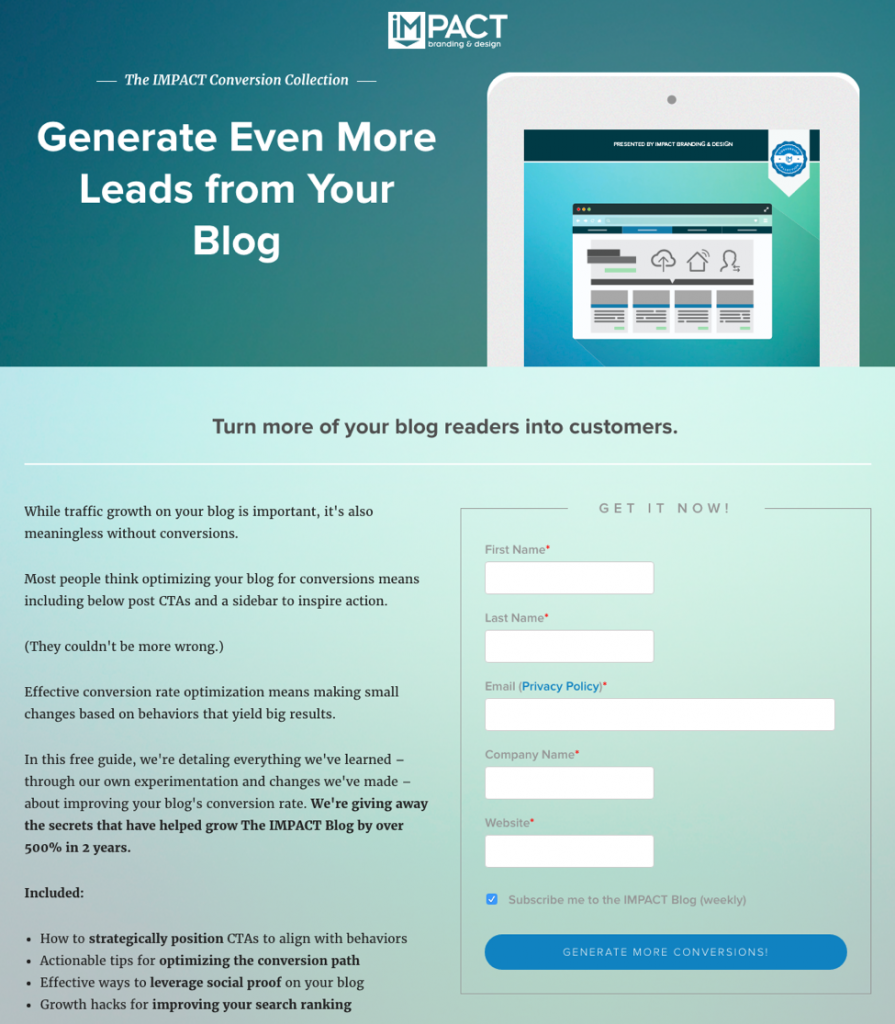
The layout is simple and uses many of the principles covered above. The hero shot is eye-catching, and the headline and body copy are benefit-driven.
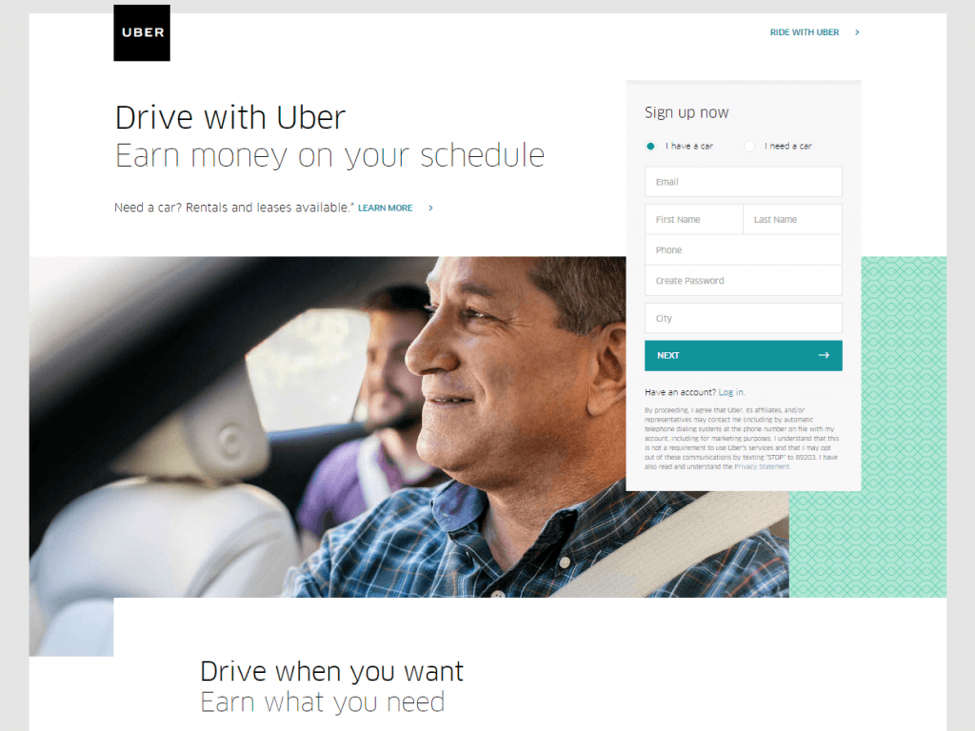
In this example, Uber has put a spotlight on their true “hero” – their drivers. The entire page is simple, elegant, and the most important information is above the fold. This use of photography provides an air of authenticity, allowing Uber to show their “human” side.
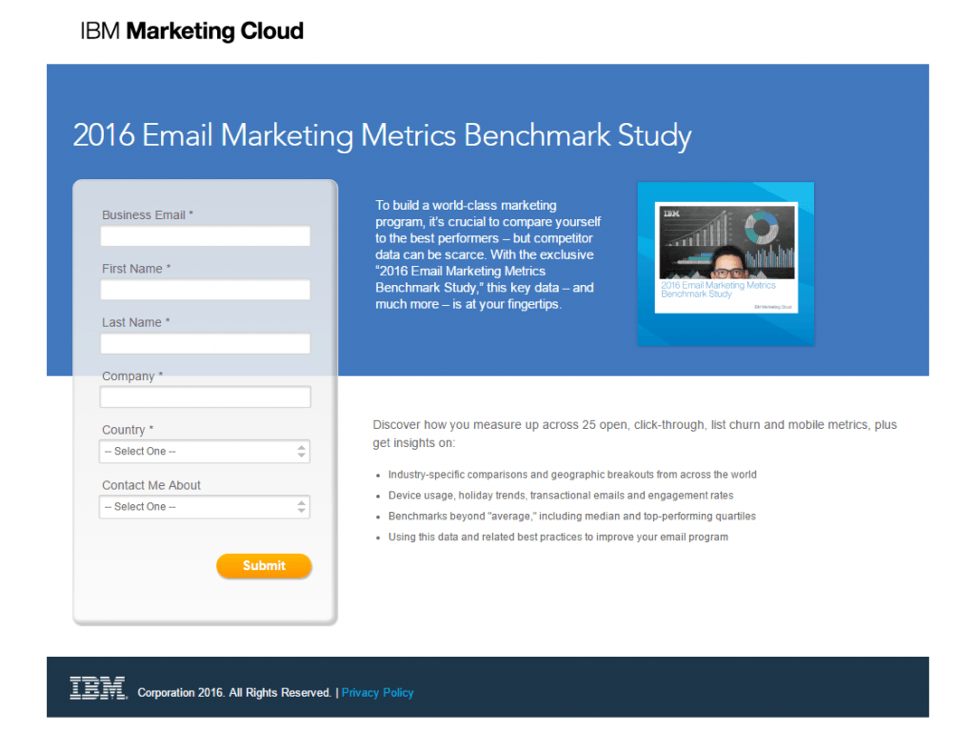
Finally, this example from IBM is bare-bones basic. It includes a headline, some benefit-driven copy about the study, and a form for the prospect to fill in. While there are minimal distractions, the number of form fields may cause unnecessary friction. Remember, only ask for the most important information from your prospects.
Several tools can help you quickly put landing pages together. Unbounce is one of our favorites, which provides a simple drag-and-drop editor that easily integrates with WordPress:
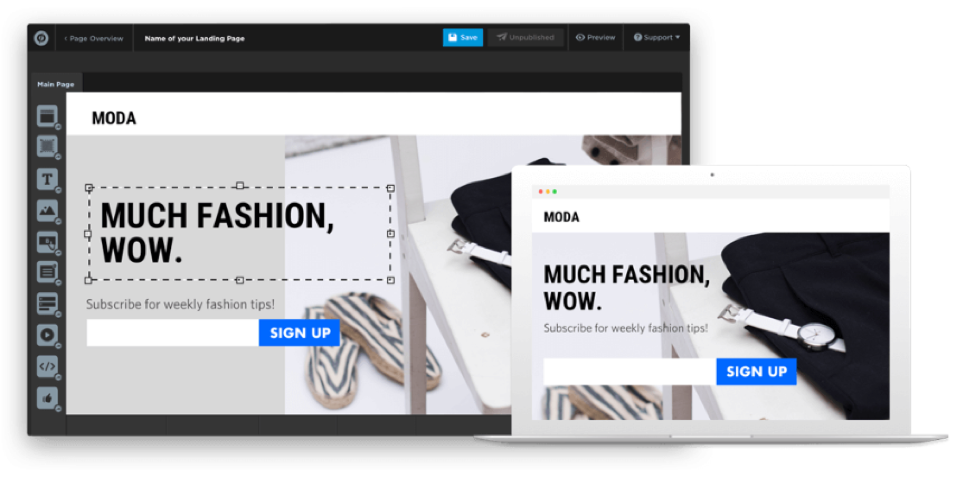
Step 5: Measure & Optimize Your Campaigns for Better Results
There you have it! You now have an end-to-end PPC campaign strategy for your tech support firm. Over time, you’ll start generating traffic, leads, and most importantly, data.
Using this data, you can measure the effectiveness of your AdWords campaigns and optimize them to supercharge results. The first step is to ensure you measure every part of the sales funnel. Do this by integrating AdWords with your Google Analytics account. This allows you to measure your PPC campaigns more effectively.
Getting the two platforms integrated is simple:
- Head to the Admin section and select “AdWords Linked” under “Property”.
- Under “Select linked AdWords accounts,” choose the account you wish to link.
- Under “Link configuration,” make sure you click “Select All” under the Links list.
- Switch the “Off” switch next to the name of your Analytics account to “On”.
It’s key you do this before or as you set up your campaigns. Google Analytics can’t access backlogged data, and you’ll have to wait to collect it over time.
With proper measuring set up, it’s time to identify your top performing keywords. Head to Google Analytics > Acquisition > AdWords > Keywords. Under the “Conversions” table column, select your Goal from the drop-down menu:
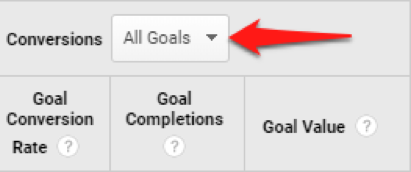
Order the report by “Goal Conversion Rate”. You should now have access to your top-performing keywords. Now it’s time to create a new Ad Group for each keyword. When doing this include broad, exact, and phrase match:
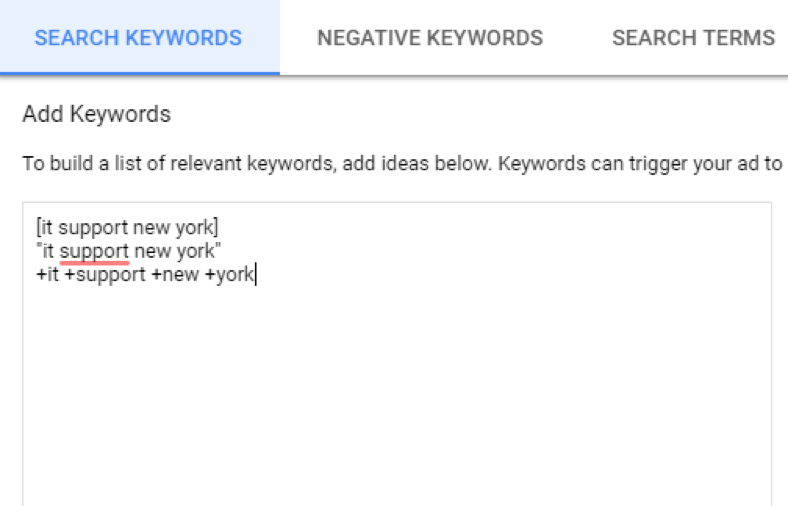
Now you can create hyper-targeted ad copy and landing pages for these keywords. As a result, you’ll see your Quality Score increase, your CPC decrease, and conversion rate skyrocket.
It’s also important to test new ad copy over time. Using the “Drafts & experiments” feature, setting up these experiments is a breeze. Head to the “Campaign Experiments” section and click “New Experiment”:
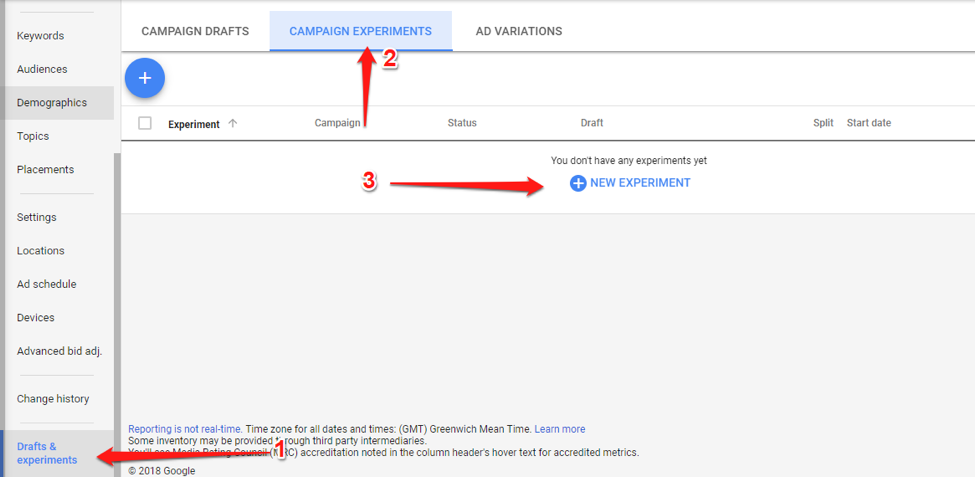
The first element to experiment with is your headline. This is where most of the impact is made, as it gets your prospects’ attention first. Try different formats, benefits, tonality, and numbers to see what generates more clicks.
Whenever you run optimization experiments, always test one element at a time. If you change the headline, description, and CTA at the same time, you’ll never know which element generated your results.
For example, Highrise tested a new headline to make it clear how easy the sign-up process is. This new headline generated a 30% increase in results:
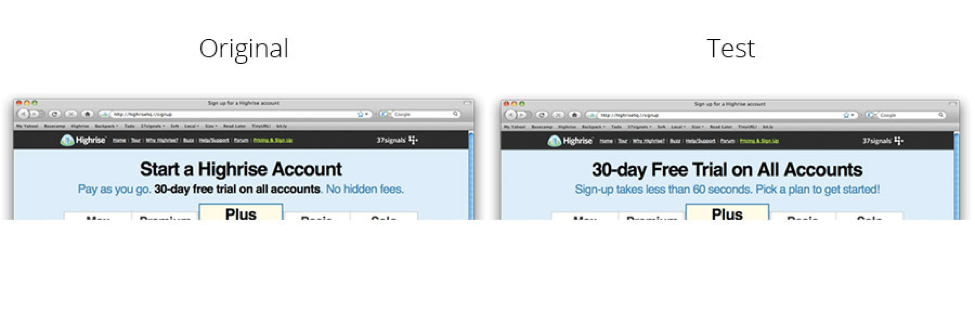 Finally, follow this process with your landing pages. Run regular experiments to boost the conversion rate. Again, only test one element at a time. For example, this could be the value proposition in your headline or the color of your call-to-action.
Finally, follow this process with your landing pages. Run regular experiments to boost the conversion rate. Again, only test one element at a time. For example, this could be the value proposition in your headline or the color of your call-to-action.
Wrapping It All Up
As you can see, marketing your tech support firm doesn’t have to be complex. It’s about targeting the right audience with the right message, ensuring you convert that attention into new business leads.
Unlike word-of-mouth and some other strategies, PPC gives you complete control over your marketing efforts. Do it right, and you’ll see your growth skyrocket.
Image Credits
Feature Image: Unsplash / freestocks.org
Image 1: Apex Tech Services
Image 2-3: Google Keyword Planner
Image 4: Ubersuggest
Image 5-10: Google AdWords
Image 11-14: screenshots via Google SERPs
Image 15: Impact
Image 16: Uber
Image 17: IBM Marketing Cloud
Image 18: Unbounce
Image 19-21: Google Analytics
Image 22: Highrise



